Dear Artist,
While visiting with a curator of Canadian art yesterday, he told me about his most recent project, involving the search and discovery of overlooked artists from smaller municipalities. He observed that some artists who haven’t worked in urban centers have historically found it more challenging to find attention. This, said the curator, could result in a delightfully uninterrupted focus – a thread running through the work, unmarred by outside influence, fads, or commercial demands. To him, this re-evaluation of the shadows could flesh out the story of Canadian art and amplify voices.
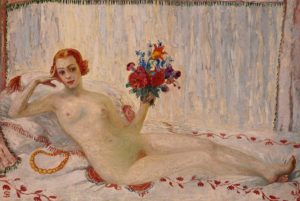
A Model (Nude Self-Portrait), 1915 – 1916
Oil on canvas
48.2 – 68.2 inches
by Florine Stettheimer (1871 – 1944)
I thought of Carmen Herrera, undiscovered in her apartment on East 19th Street in Manhattan, whose practice of composing poetically minimalist, hard-edge abstractions remained untouched by outside influences until she sold her first work at age 89. By then of course, she was fully formed. If Carmen struggled for an audience from East 19th Street, I wondered what lay in wait in the studios of everywhere else? And even if New York is only a symbol, or a syndrome, or a myopic – an all-but-opaque view – of a wide and wonderful world of artistic possibility, up until recently (before the internet) that bigger world was perhaps, as the curator supposed, simply not always on the radar of the conventional art world. We mused about the “scene” – the ‘50s, the art schools, the movements and even the tunnel vision of modern curatorial practice, and what that can overlook.
“There is value in long years of obscurity,” wrote Jules Olitski. “If one doesn’t go insane or suicidal, in that, simply because nobody is looking, the habit of fooling around and trying things out gets ingrained.” This is okay, plus cold or at least lukewarm comfort to the struggling; even if irresistibly romantic, after-the-fact, to imagine the silent plodding in obscurity of a single-minded visionary, unrequiring of feedback, let alone sustenance or shelter, which must manifest not by way of art. We do still seem to gobble up a Cinderella story. It continues, perhaps, to be longed for as part of a certain kind of archaically outdated mythmaking. As hunter-gatherers, perhaps we require the thrill of discovery to feel alive. And art is one of our aliveness-barometers. The discovery of our makers after they’ve suffered in the dark is a manufactured seduction as part of the armature of a power structure in need of adjustment.
Then again, for the artist, to make anything for the purpose of external reward is, in itself, a misguided errand. “It’s very interesting being legendary when you can’t even make a living and the public’s never heard of you,” wrote early 20th-century modernist painter, feminist and salonnière Florine Stettheimer, who sparkled in her own Bohemian New York circles, to then be eclipsed by history’s shinier objects. “The very ink with which history is written,” wrote Mark Twain, “is merely fluid prejudice.”
Sincerely,
Sara
PS: “I’m afraid of losing my obscurity. Genuineness only thrives in the dark. Like celery.” (Aldous Huxley)
Esoterica: Artists, like celery, need both obscurity and light. The secret is to cultivate a kind of light you can control: conditions for working, environment, attitude, desire, and what’s going to bring you authentic joy. I remember walking down Park Avenue after learning that my dealer had sold a painting that would hang in a private apartment in the Plaza Hotel. I’d been scrapping away in New York for enough time to know that these types of achievements were not easy, but possible. I slalomed the sidewalk thick with white and blue collars. I called my Dad and shouted my news over the horns and sirens. He was, as he did every day, sitting at his easel, at the edge of the forest in South Surrey, wearing a telephone headset, so as not to be disrupted when the phone rang. Airedale Dorothy snored on her back in the chaise-lounge nearby. “You are paying for the privilege of being in the proximity of those who share the vocabulary of what you are trying to create,” he said measuredly, mid-stroke. What he really meant was, “Your dreams are worth the sacrifice of living in that place full of all the wrong sounds.”
“I don’t mind going without food or sleep as long as I am doing something worthwhile to me, such as this.” (Nina Simone)
Have you considered a Premium Artist Listing? With each letter, an artist is featured at the bottom of this page. The Premium Artist Listings are a means of connecting artist subscribers through their work. Proceeds from each listing contribute to the production of The Painter’s Keys.
Featured Workshop
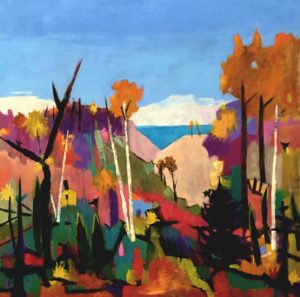 Permission to Paint Expressively Series Session 1
Permission to Paint Expressively Series Session 1
June 27-30, 2022
Join Ellie Harold for “Expressive Painting: Color from the Inside Out.” Do you struggle with color? For chromophobics or anyone who would like greater freedom in their use of color, this workshop focuses on activating and applying your innate color sense. Content, process and lightly structured exercises allow you access to a wider range of color expression in the safe space of Ellie’s studio, located only 3 blocks from Lake Michigan near Sleeping Bear Dunes. “Expressive Painting: Color from the Inside Out” has the potential to transform not only your art but your life! Details and registration at www.EllieHarold.com.
Featured Artist
I grew up on a farm in Ohio, and that experience gave me a love of nature and the seasons and a deep belief in personal independence, as well as a love of experimentation. These have been the foundations of my work as a painter. I believe that learning in art or any subject is lifelong, and that the most important lessons we learn are through our personal interests and experimentation. After my husband’s death in 2018, I visited Israel the next year, and was inspired by the amazing landscape colors, and especially the old city of Jerusalem, with its crumbling walls, and its deep religious importance. I found my way out of grief by painting the Eight Gates of the old city.

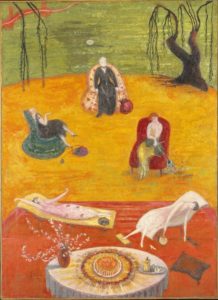
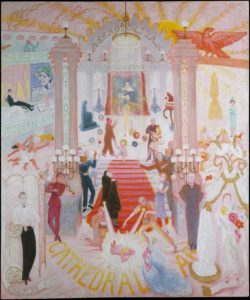
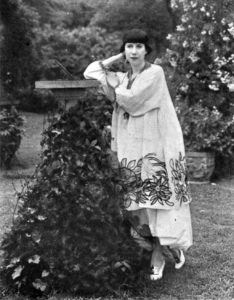

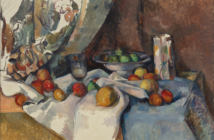
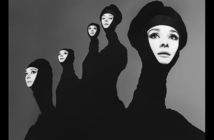
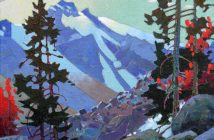
12 Comments
What a wonderful article–thank you, Sara!
” Memories have huge staying power, but like dreams, they thrive in the dark, surviving for decades in the deep waters of our minds like shipwrecks on the sea bed.”
– J. G. Ballard
This morning, I released a poem titled: “Grandma Ida Yohnke” that you may enjoy. Just cut & paste this URL:
salmonstudio.wixsite.com/yohnke/post/grandma-ida-yohnke
Thank you!
As always, love is the way,
Miles Patrick Yohnke
So refreshing to see & read a wholesome tale from Saskatchewan!
An unusual spelling for the name … where I was born and raised,
Jahnke is a family that became 5 generations, some of them are my nieces and nephews.
Dear Merle,
Thank you so very much for reading and responding. Originally our name was spelled ‘Jahnke’, but our Great Grandfather Ludwig changed it to ‘Yohnke’. I’ve written an article titled: “Building Happiness” that expands upon this and so much more that I think everyone within this commUNITY will find interesting. My nephew, Travis Yohnke, is also an artist, and has an Oscar & Emmy to his name. He is also an exceptional photographer.
The URL for Building Happiness:
salmonstudio.wixsite.com/yohnke/post/building-happiness
Travis Yohnke URLs:
ca.linkedin.com/in/travis-yohnke-5325b12
facebook.com/Travisyohnkephotography
Merle, only my grandfather Emil came to Canada (in his late 20’s). Ludwig & the balance of the family lived in Wall Lake, Iowa (the birth place of Andy Williams). Ludwig, Julia & others are buried there as well. Merle, if you are ever interested in calling me you can find my number on my website. Love to hear from you. Thanks again for reading & responding.
As always, love is the way,
Miles Patrick Yohnke
I love esoterica. Especially when you are sharing a nugget from your life with your dad. ❤️
I too love all of Sara’s memories and I bought her dad’s book “Robert Genn, The Twice Weekly Letters”. It is a wondrous legacy of his thoughts and life! In one of his letters he had this quote,
“Plan like a turtle , paint like a rabbit”!
Yes, I like this letter a lot….. Having set up my studio at the end of a road on a small island there is nothing better than this quiet place to paint…. to study …to learn…. and to paint some more….
After a lifetime of being anonymous and invisible, I decided to turn it to my advantage–being mysterious. Love the Aldous Huxley quote–so just call me ‘celery.’ Reminds me of the quote (don’t know the author): “What would you attempt if you knew you couldn’t fail?” Thanks, Sara.
A great article Sara and I am so glad that your dreams are worth living in that place with all the wrong sounds. Oh, I laughed at your dad’s response because this could have easily been my response. I do live rural with no local hospital, no fast food places and no box stores. We do have the essentials such as a gas station which is also post office, a couple of grocery stores, a hardware store, a health clinic with a doctor, a library, a clothing store, a liquor store and a few small art gallery shops and art studios scattered along island roads in the trees. We also have access from our small island to large cities in two direction, though timing varies one way between 1.5 to 3 hours and are scheduled with access only a couple of time a day.
This said, because of the internet, I feel as connected to larger centres and international art conventions and education as I wish… and the southwest coast sounds are perfect! However, there is a difference between designing an art practice that secures one’s desired amount of independence with a permeable boundary to outside influence and that of being so much in the dark that there is no awareness of the outside world or of that world to you or your work. If one is to work in that level of darkness it should be by choice, not by exclusion, or because of not living in the right place or playing the right exhibition games. I would hazard to guess that possibly the physically rural artist and urban artist both can suffer equally these days from undesirable or unintended darkness.
It is the desired level of darkness that is most interesting I think. I personally have developed a refined ability to move between the sacred space of my art making which kicks in as soon as I enter the studio or grab my plein air bag or look through the camera lens while gathering references. When the painting practice activities are done, I step out of this space and turn my attention to finding homes for what I have created or even what I might like to create. The time between the two practices is divided approximately 50/50 over a month. If one is to do 50/50 split, as long as they have an internet connection, it doesn’t seem to matter if they live urban or rural – the amount of darkness now becomes the artist’s choice. This is because the 50 percent of time spent finding homes for paintings through representing, marketing and selling ones work either directly or by developing contracts with third parties such as curators, art agents and galleries ensures their is enough light and remuneration to sustain the highly valued dark places for inner peace for making our best art.
Sometimes, an artist is lucky and they have a partner that can do much of 50% for finding homes for artwork. I am not so fortunate and know that if homes are to be found, this task falls on squarely on my shoulders and it can be done from a small island off the southwest coast of Canada where the number of paintings painted continues and the number of paintings sold increases year over year, even during the pandemic. The Ukrainian war might change this but my strategy and fallback scenarios are already developed and being implemented to sustainably weather what appears to be a worldwide unraveling on many levels…. And the painting shall continue as long as I am able to paint.
50/50 in time spent is an interesting viewpoint. The social media aspect of finding homes for my art can seem daunting yet necessary to maintain motivation for creating. Thank you for putting a boundary around it.
Every time I am painting I ponder all these questions to myself. I have become a reclusive painter in the last few years instead of a “social painter” who didn’t put anything on canvas without it being scrutinized by fellow painters on some level. I wouldn’t consider myself painting in obscurity since what I paint does get put on the market. Perhaps people do remember me, not sure, I cancelled out of social media and never go anywhere, not pandemic reasons, just how life is now. I feel a sense of calm in knowing I paint for the physical me now, and not the ego image me. Not competing against others. Not painting to hope to walk across a stage and get a trophy. Nope, in the musically set studio I take a deep breath and let the painting take me to where ever it must go. So much better. Great letter, Sara, thank you!!
No more market place for me. Not too successful there as I was never comfortable with it . Now I paint for me alone and it is just fine. Freeing in fact. Do like to share with friends and family.
I have been painting and illustrating for 20 years and this year have gone back into my studio to explore sculpting. I am in my 50s and feel that it will to ake many more years for me to be where I want to be artistically and that’s ok. This article offers validation of my quiet work in my own relative darkness. I do hope to have my art recognized in time. My mother lives to be 93;years old and I hope to have many years ahead to play and explore.